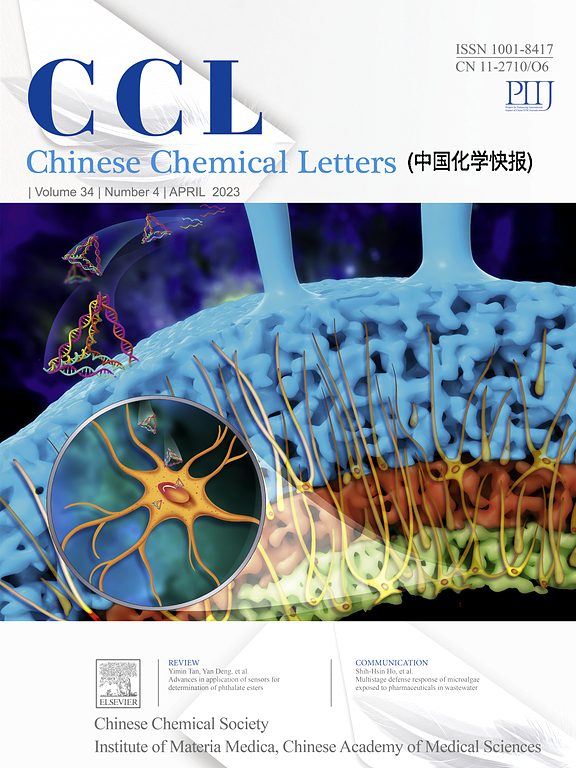Nature's revelation: Preparation of Graphene-based Biomimetic materials and its application prospects for water purification
IF 8.9
1区 化学
Q1 CHEMISTRY, MULTIDISCIPLINARY
引用次数: 0
Abstract
Pollutants contained in wastewater pose serious harm to the environment. Graphene-based water treatment materials show significant advantages in wastewater treatment. However, with the development of graphene-based materials, its progress in water treatment has reached a bottleneck. The challenge lies in effectively enhancing its performance in water treatment and ensuring its practicality. By employing biomimetic approaches, some exceptional properties and structures found in nature can be mimicked in graphene materials, effectively enhancing graphene's adsorption and mechanical properties. Current biomimetic methods include biomimetic mineralization, self-assembly, and templating. unfortunately, all of the above methods suffer from the disadvantages of complexity and poor bionic effect. Nevertheless, 3D printing, a form of additive manufacturing (AM) technology, offers integrated molding and excellent biomimetic performance in creating biomimetic materials. This paper will cover the following aspects: (1) An overview of objects suitable for bionics in terms of functional and structural aspects, along with their properties, and a discussion of various bionic objects combined with graphene materials in water treatment and related research; (2) a comparison of different methods for preparing graphene-based bionic materials; (3) an examination of the current drawbacks and limitations of graphene-based biomimetic materials; and (4) a conclusion and future prospects, exploring the potential of using 3D printing technology to produce graphene biomimetic materials. This review aims to serve as a guide for effectively leveraging natural inspirations to create graphene-based biomimetic materials and enhance graphene properties.

大自然的启示:石墨烯仿生材料的制备及其在水净化中的应用前景
废水中所含的污染物对环境造成严重危害。石墨烯基水处理材料在废水处理中具有显著的优势。然而,随着石墨烯基材料的发展,其在水处理方面的进展已达到瓶颈。挑战在于如何有效地提高其在水处理中的性能,并保证其实用性。通过采用仿生方法,石墨烯材料可以模仿自然界中发现的一些特殊性质和结构,有效地增强石墨烯的吸附和力学性能。目前的仿生方法包括仿生矿化、仿生自组装和仿生模板。遗憾的是,上述方法都存在复杂和仿生效果差的缺点。然而,3D打印作为增材制造(AM)技术的一种形式,在创建仿生材料时提供了集成成型和出色的仿生性能。本文将涵盖以下几个方面:(1)从功能和结构方面概述适合仿生学的物体,以及它们的特性,并讨论与石墨烯材料结合的各种仿生物体在水处理中的应用及相关研究;(2)石墨烯仿生材料不同制备方法的比较;(3)石墨烯仿生材料的缺陷和局限性;(4)结论与展望,探讨了利用3D打印技术生产石墨烯仿生材料的潜力。本综述旨在为有效利用自然灵感创造基于石墨烯的仿生材料和增强石墨烯性能提供指导。
本文章由计算机程序翻译,如有差异,请以英文原文为准。
求助全文
约1分钟内获得全文
求助全文
来源期刊

Chinese Chemical Letters
化学-化学综合
CiteScore
14.10
自引率
15.40%
发文量
8969
审稿时长
1.6 months
期刊介绍:
Chinese Chemical Letters (CCL) (ISSN 1001-8417) was founded in July 1990. The journal publishes preliminary accounts in the whole field of chemistry, including inorganic chemistry, organic chemistry, analytical chemistry, physical chemistry, polymer chemistry, applied chemistry, etc.Chinese Chemical Letters does not accept articles previously published or scheduled to be published. To verify originality, your article may be checked by the originality detection service CrossCheck.
 求助内容:
求助内容: 应助结果提醒方式:
应助结果提醒方式:


